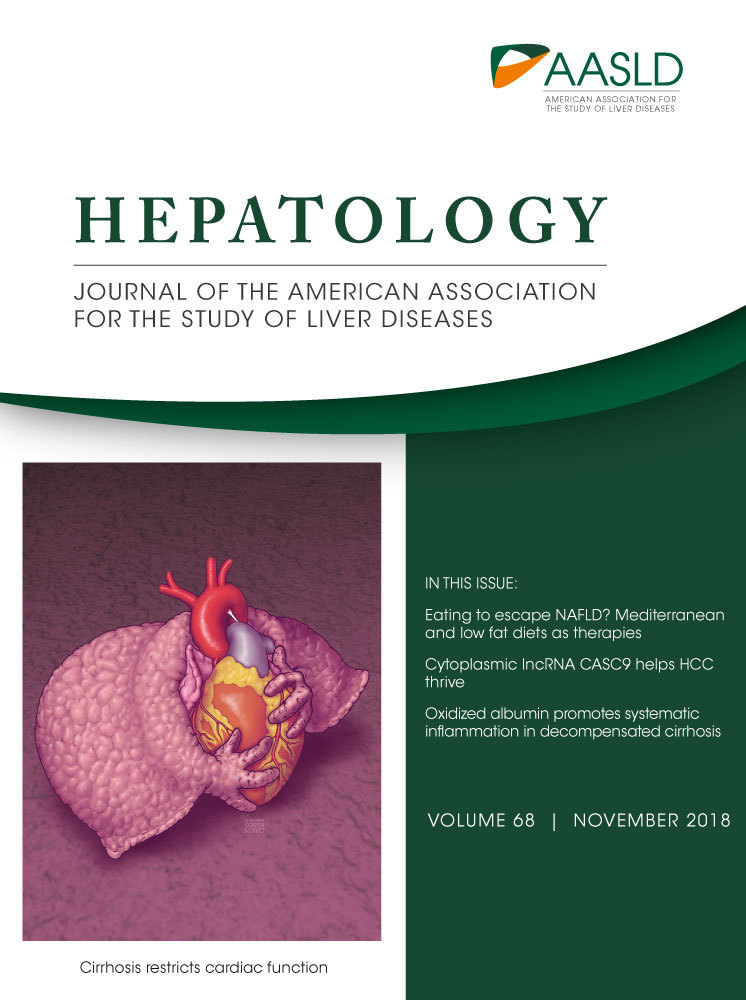Reply:
We thank Dr. Cardoso for his letter about our recent Hepatology article validating the easy-to-use North American Consortium for the Study of End-stage Liver Disease (NACSELD) acute-on-chronic liver failure (ACLF) score in 2,675 prospectively enrolled patients continent-wide.1 His main concern was the possibility that patients could meet NACSELD-ACLF criteria (two or more organ failures) by requiring intubation for airway protection during grade III/IV hepatic encephalopathy.2 This is because our simple bedside tool does not require the calculation of a partial pressure of arterial oxygen (PaO2) to fraction of inspired oxygen (FiO2) ratio like the more complicated Chronic Liver Failure-Sequential Organ Failure Assessment score.3 In the database we did not collect PaO2 and FiO2 values, so we are unable to calculate this ratio. Therefore, to address this concern, we eliminated all 90 patients who had just these two organ failures and recalculated the statistics (Table 1). Of note, the predictive power of the NACSELD-ACLF score did not change when we reevaluated only infected patients, only uninfected patients, and all patients together after eliminating these 90 patients. Therefore, the NACSELD-ACLF score not only stood up to the test of validation in two separate cohorts1, 2 but retained its predictive power in both infected and uninfected patients and remained valid even when 90 ACLF patients were removed and all of the statistics were recalculated.
| Original | Revised, Excluding ACLF Resulting from Respiratory and Brain Failure Only | |||||||
|---|---|---|---|---|---|---|---|---|
| Effect | Estimate | SE | χ2 | P | Estimate | SE | χ2 | P |
| Infected patients | ||||||||
| NACSELD-ACLF | –1.8435 | 0.2297 | 64.39 | <0.0001 | –1.9670 | 0.2629 | 55.99 | <0.0001 |
| MELD | –0.0508 | 0.0140 | 13.14 | 0.0003 | –0.0514 | 0.0146 | 11.83 | 0.0006 |
| WBC | –0.6561 | 0.1282 | 26.17 | <0.0001 | –0.6353 | 0.1298 | 23.95 | <0.0001 |
| Albumin | 0.2168 | 0.1561 | 1.93 | 0.16 | 0.2291 | 0.1635 | 1.96 | 0.16 |
| Uninfected patients | ||||||||
| NACSELD-ACLF | –1.2258 | 0.3281 | 13.96 | 0.0002 | –0.9130 | 0.4028 | 5.14 | 0.02 |
| MELD | –0.0971 | 0.0146 | 44.09 | <0.0001 | –0.1000 | 0.0150 | 44.64 | <0.0001 |
| WBC | –0.4146 | 0.1181 | 12.33 | 0.0004 | –0.3790 | 0.1230 | 9.50 | 0.002 |
| Albumin | 0.2707 | 0.1761 | 2.36 | 0.12 | 0.2830 | 0.1830 | 2.39 | 0.12 |
| All patients | ||||||||
| NACSELD-ACLF | –1.7390 | 0.1890 | 84.62 | <0.0001 | –1.7098 | 0.2176 | 61.74 | <0.0001 |
| Age | –0.0475 | 0.0082 | 33.27 | <0.0001 | –0.0472 | 0.0086 | 30.16 | <0.0001 |
| WBC | –0.5547 | 0.0830 | 44.65 | <0.0001 | –0.5301 | 0.0845 | 39.34 | <0.0001 |
| Albumin | 0.3055 | 0.1179 | 6.71 | 0.01 | 0.3331 | 0.1230 | 7.34 | 0.007 |
| MELD | –0.0852 | 0.0106 | 64.95 | <0.0001 | –0.0862 | 0.0110 | 61.43 | <0.0001 |
| Had infection | –0.4015 | 0.1660 | 5.85 | 0.02 | –0.4129 | 0.1726 | 5.72 | 0.02 |
- Abbreviations: MELD, Model for End-Stage Liver Disease; WBC, white blood cell count.
Dr. Cardoso’s second concern was with our proposal that the NACSELD-ACLF score may help to determine the futility of continued aggressive care in hospitalized patients with cirrhosis. To be clear, we are not advocating the use of the NACSELD-ACLF score in isolation to determine futility. Instead, we feel the NACSELD-ACLF score is one essential, simple bedside tool for clinicians to use when evaluating a patient’s prognosis. Many, if not most, patients with four-organ system failure will not derive benefit from further aggressive intensive care; however, other factors such as age, transplant candidacy, patient/family preferences, and early clinical improvement play key roles in making the final decision of whether or not to pursue further aggressive care versus comfort care in an individual patient.4 It is also important to consider that although a patient may survive an inpatient stay after developing NACSELD-ACLF, this does not tell us the longer-term prognosis, risk for readmission, or quality of life.5
Potential conflict of interest
Nothing to report.




